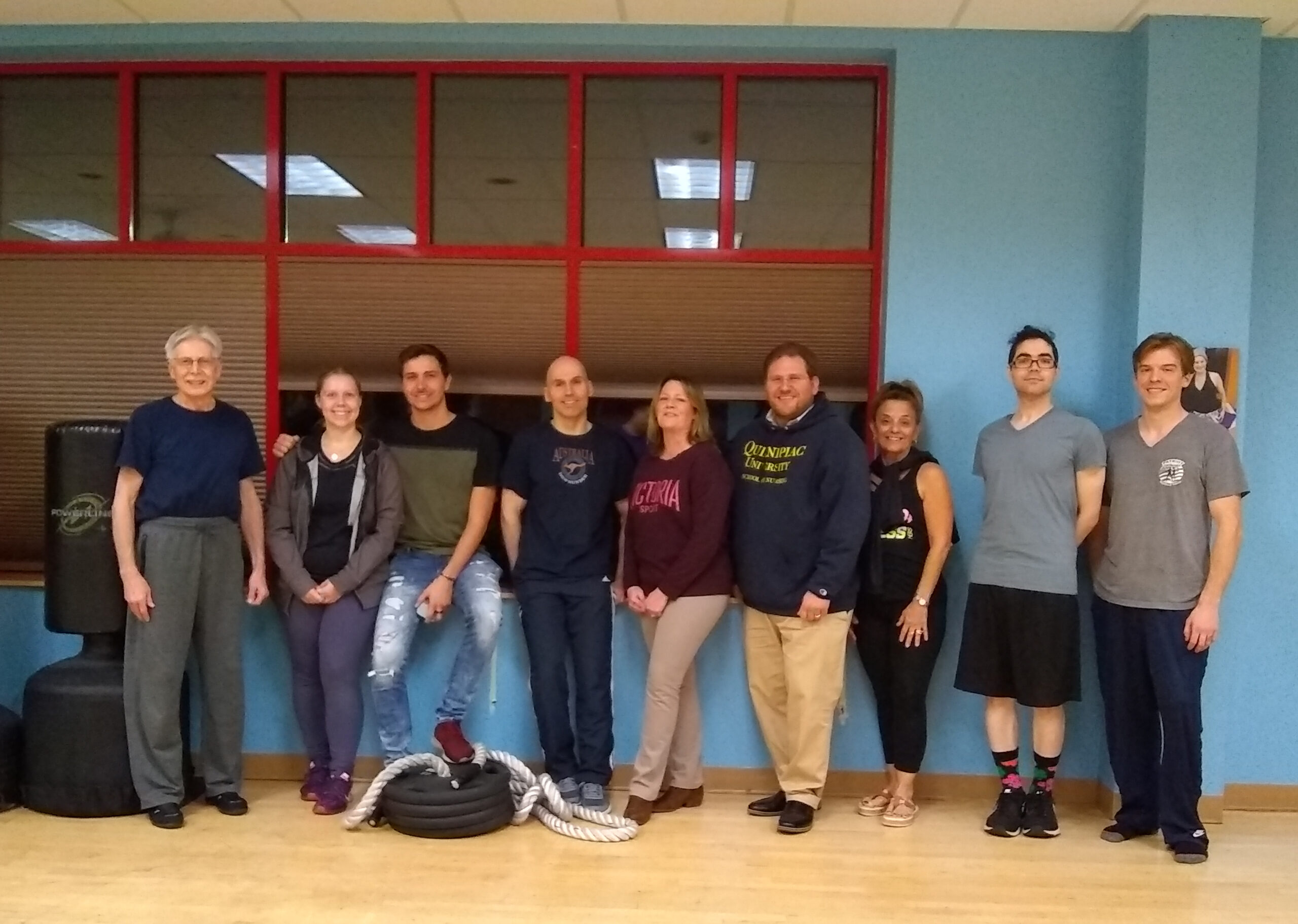Quinnipiac University Study
aided by the University of Saint Joseph School of Interdisciplinary Health and Science
Background
After many experiments, learning, analysis and more experiments, finally I was fortunate to have found a way to heal my injuries. The first problems, a reoccurring lower back pain and occasional sciatica were resolved with my early experiments. But two injuries, one in the hamstring area for 18 years and another in the groin area, for 20 years, were very stubborn. After exhausting all available treatment options, these injuries refused to heal and kept returning. The turning point was seeing a video, Strolling Under the Skin, by Dr. Jean-Claude Guimberteau. The video revealed new, breakthrough insights about the functions of the mysterious fascia structure. This advancement changed medical science’s fundamental understanding of how the body functions. The video gave me the insight to understand what the structure actually was which I had problems with, and how it worked. It also explained why my early experiments brought positive results with my back pain.
Based on these new insights my redesigned experiments yielded very quick results. The hamstring area injury healed in about a month. Expanding the techniques and methods to other areas, and developing a strategy, I was fortunate to have been able to develop a comprehensive system that resolved all my injuries, eliminated any pain and substantially increased my flexibility.
After applying this same system to help several other people I became convinced that it was universally applicable. But, I needed more then just anecdotal evidence. Professor Richard Feinn from Quinnipiac University came to the rescue. He allowed me to propose a study. Professor Fienn teamed up with Professor Karen Myrick to undertake the study. Prof. Myrick organized a team comprised of Matthew Williams, Jessica Lapinsky and, eventually, Professor Nicholas Nicholson. Prof. Myrick and Prof. Fienn guided the proposal through the necessary approvals.
The North Haven Health & Racquet club agreed to host the study. Fortunately, I have very dedicated and caring helpers, Will Bermender, Diane Jablonski and Scott Vonick who assisted me in carrying out our part of the work during the study.
Although Professor Myrick left Qunnipiac and joined the faculty of the University of Saint Joseph, she stayed with the Team to finish the study. She has been the lead in publicising the study, so we owe her many thanks.
Study Overview
The study subjects were a random group, ranging in age from 30 to 77 years old, a mix of men and women, with varying height, weight and other physical characteristics.
The study measured the range of motion of the subjects in several key areas, based on established, known measuring techniques and metrics. The subjects also filled out questionnaires regarding the pain they experienced and other aspects of their quality-of-life, using known and accepted medical metrics.
The results of the study confirm that the Painless Flexibility™ system is effective in increasing flexibility and reducing/eliminating pain, particularly in the lumbar area, as well as improving the quality of life. This is a viable alternative treatment to the common lower back pain that afflicts many millions of Americans.
The study results have been presented on the following forums:
1.) Eastern Nursing Research Society, 32nd Annual Conference, in May 2020 (virtual presentation). Placed in Library.
2.) American College of Sports Medicine, on a virtual conference in May, 2020.
Abstract published in:Medicine & Science in Sports & Exercise: Nicholson, Nicholas, Myrick, Karen, Lapinski, Jessica, Williams, Matthew, Nemeth, Laszlow & Feinn, Richard. (2020). Evaluation Of The Painless Stretching Program On Range Of Motion And Pain: 1572 Board #166 May 28 10:30 AM – 12:00 PM. Medicine & Science in Sports & Exercise, 52, 417. https://doi.org/10.1249/01.mss.0000678396.63339.84

Members of the Quinnipiac University study team and the Painless Flexibility™ team, R to L: Scott Vonick, Will Bermender, Diane Jablonski, Professor Nicholas Nicholson, Professor Karen Myrick, Professor Richard Fienn, Matthew Williams, Jessica Lapinsky, Laszlo Nemeth